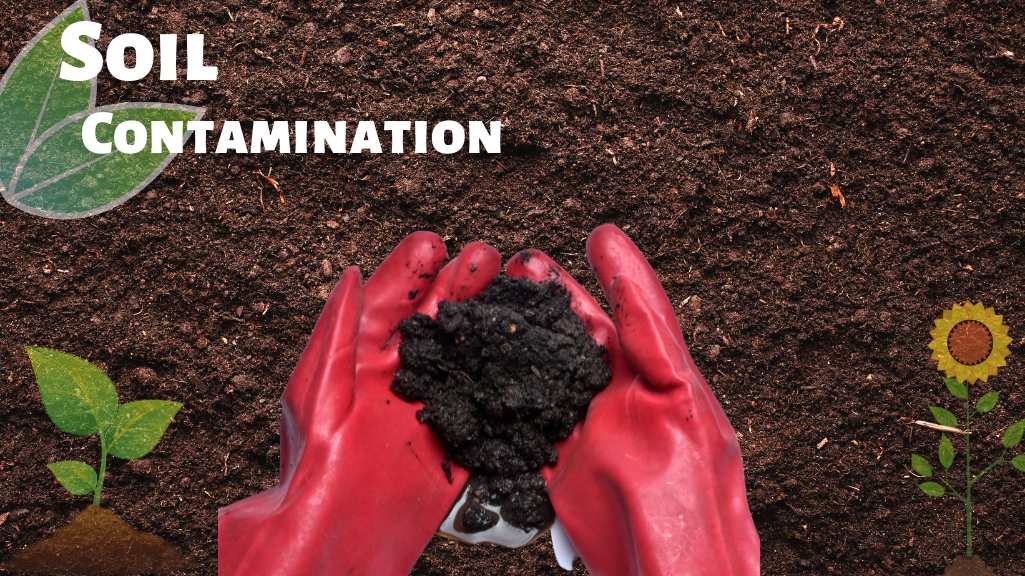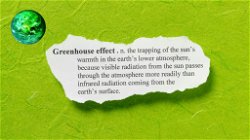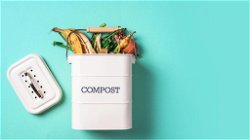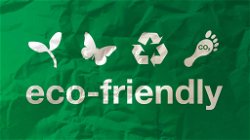Contamination of Soil: What Causes It and How Can It Be Prevented?
Vihaan Disouza
. 5 min read
The accumulation in soil of persistent toxic compounds, chemicals, salts, radioactive materials, or disease-causing agents, all of which have the potential to have a negative impact on plant growth and animal health is what is known as soil contamination. The thin layer of organic and inorganic materials that covers the rocky surface of the earth is what we refer to as soil. The darkest part of the topsoil is where the majority of the organic material, which is comprised of the decomposed remains of plants and animals, can be found concentrated.

Major contributors to Soil Contaminants
Petroleum hydrocarbons
The majority of the time, crude oil and natural gas are the ones to blame for the contamination of soil with petroleum hydrocarbons. Hydrocarbons derived from petroleum are responsible for nitrogen fixation and the formation of organic matter, both of which have a significant impact on the microbiological, physical, and chemical characteristics of soil. When there is more organic matter in soil, the water-holding capacity of the soil rises, sometimes to the point where it deflocculates. This causes the soil to lose its structure and makes it more susceptible to erosion [2].
Agrochemicals (pesticides, herbicides, and fertilizers) (pesticides, herbicides, and fertilizers)
Products that are used in agriculture are known as agrochemicals or agricultural chemicals. These products include, but are not limited to, pesticides, insecticides, herbicides, nematicides, and fungicides. It is also possible that this phrase is referring to hormones and artificial fertilizers. When these chemicals are stored in bulk in an improper manner, there is a risk that they will accidentally spill, leak, or leach into the surrounding environment. Because of the varying wind patterns, pesticides that are sprayed from planes or tractors frequently end up on other plants and animals instead of the intended target.
Herbicides
Herbicides such as sodium arsenite (Na3AsO3), sodium chlorate (NaClO3), and other similar substances were produced by industries gradually over time. Herbicides can be broken down into their component parts in a matter of weeks or months. However, even they have an effect on the environment and are not particularly friendly to the environment.
Pollution Caused by Industry
It is possible for the soil to become contaminated when certain types of industries dispose of their chemical waste in an improper manner. The disposal of industrial waste, heavy metals, toxic chemicals, dumping oil and fuel, and other human activities have all contributed to the contamination and acidification of the soil, which was caused by human activities such as these.
Solid Waste
The disposal of solid waste, such as plastics, cans, and other containers, falls under the heading of soil pollution. Due to the presence of potentially hazardous chemicals, improper disposal of electronic waste such as batteries has a negative impact on the surrounding environment. For example, the presence of lithium in batteries has been shown to cause leaching in soil.
Controlling the pollution of the soil and its effects
In order to avoid further soil contamination, it is essential to get a handle on the factors that contribute to the problem. Reduce as much as possible your use of plastics: The fertility of soil is diminished when plastics and polythene bags are used. As a consequence of this, these should be disposed of in an appropriate manner, and their utilization should be avoided if at all possible.
Pollutants emitted by both factories and private homes:
The soil can be contaminated by the waste products produced both by industries and by households. These harmful pollutants ought to first undergo some kind of chemical treatment in order to render them harmless before being thrown away.
There are also chemicals known as pesticides and insecticides that can be found in the soil
Treatment needs to be given to industrial waste before it can be released. Therefore, it is important to limit how much of these substances you take in your body.
Gain a deeper comprehension of the soil environment quality standard.
It is essential for all stakeholders to have a fundamental understanding of the quality of the soil environment as a starting point in order to effectively control and prevent soil erosion. This understanding can be attained by conducting sensitizations and surveys on soil pollution.
Create the necessary legislation regarding the control of soil pollution
Even though actions are being taken to ensure that soil pollution control is maintained, the process should be sped up by drafting the necessary legislation in order to meet the objective. Existing registrations, such as urban and rural planning, agricultural practices, and land management, ought to be revised and brought up to date in order to include contemporary soil pollution control and prevention measures.
The efficient administration of agricultural land and the implementation of organic farming practices
There are a great many distinct meanings that can be attached to the term "organic farming." The vast majority of them argue that organic farming precludes the use of pesticides and fertilizers that are manufactured in a laboratory. Although this is correct, there is a great deal more to organic farming than just that. Organic farming, which is a completely natural and environmentally responsible method of farm management, is founded on a variety of distinctive principles.
The Treatment of Municipal Solid Waste
The production of solid waste places a strain on natural resources and poses a significant threat to the achievement of sustainable development. Effective management of the area's solid waste is among the most effective solutions to the problem at hand. Soil pollution occurs when the natural environment of the soil is altered in some way, whether by the presence of xenobiotic (man-made) compounds or other changes. The most significant contributors to soil contamination are commercial and industrial activities, the use of agricultural chemicals, and improper waste disposal.
Maximizing Home Organization: Utilizing Existing Containers Instead of Buying New Ones
Utilizing the containers that are already present within the home as opposed to going out and purchasing new ones from the store. It is important for customers not to give in to the urge to buy new products, even if they consider the appearance of those products to be superior to the ones they already own.
Reuse: Instead of throwing away soft drink cans or bottles, you can help reduce soil pollution by decorating them with homemade paper or paint and using them as pencil stands or miniature bouquets. This will help you reduce the amount of waste that ends up in landfills.
Recycling: Using reusable shopping bags, such as those made of cloth or jute, and making sure that the rubbish is separated so that it can be picked up and taken for recycling will make a significant difference in the amount of pollution that is caused to the soil.
Reduce: Bringing one's own shopping bag to the store and placing all of the items purchased there should be encouraged. This will help cut down on waste. This will contribute to the generation of less waste.
More Stories from
Sustainable Living: Practical Tips and Innovative Solutions for a Greener Future.
Explore practical tips and innovative solutions that can help you make a positive impact on the environment.
Unveiling the Greenhouse Effect: Causes, Impacts, and Sustainable Solutions
This article provides a concise overview of the greenhouse effect, exploring its causes, impacts, and potential solutions.
Unveiling India's Volcanic Secrets: A Geological Overview
Explore India's unique volcanic history and the enduring forces of nature that continue to captivate scientists and adventurers alike.
Zero-Waste Living: Practical Tips for Reducing Environmental Impact
Discover the power of zero-waste living as this article offers practical tips and actionable advice for reducing your environmental impact.
Eco-Friendly Practices: How Individuals and Businesses Can Make a Difference
Discover the Power of Eco-Friendly Practices: Learn how individuals and businesses can contribute to a greener world by adopting sustainable measures.










.png?width=40&aspect_ratio=1:1)


.png?width=40&aspect_ratio=1:1)